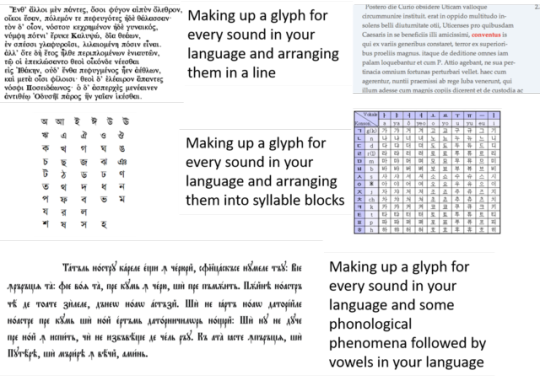Text
Cypriot Arabic - Sanna
Okay so I did the endangered language challenge for Sanna, but in it I didn’t get to discuss orthography. The Sanna language has historically used 3 alphabets, but only 2 are used today, kind of. Let’s break it down!
Arabic:
Historically the Arabic alphabet was used for the language, who would’ve guessed! According to Ethnologue, Sanna used the Naskh script. Unfortunately, I can’t find a chart for its use, and I am not familiar enough with this script to make my own chart. I’ll go ahead an attempt it, but take it with a grain of salt! I’m going to attempt to use my knowledge of the Arabic alphabet to do this, but I will also use this to try and fill in what I’m unsure about.
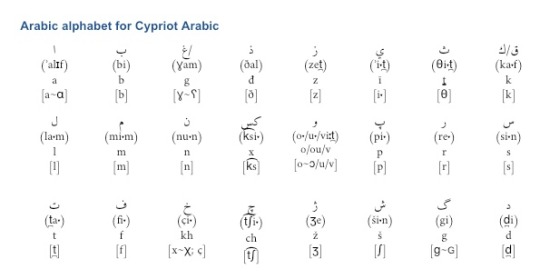
Greek:
Due to its place in Cyprus, Sanna was heavily influenced by the Greek language. The alphabet needs a few diacritics and digraphs to express the sounds not found in Modern Greek. However, these diacritics are different from the ones used for other Greek alphabets. For example, a line underneath certain letters to modify its sound, like σ̲ for the sh sound. Another feature is that if you put a letter twice it would make the letters an aspirate. For example, κ makes a k sound and κκ makes a kʰ sound. Unfortunately, the Greek alphabet is declining in use, and according to some accounts, isn’t used anymore.
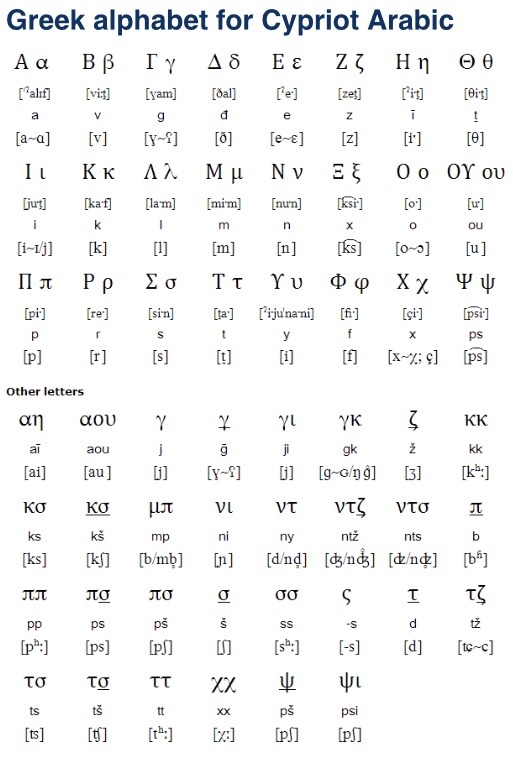
(Source)
Latin:
The Latin script for the language was developed by the linguist Alexander Borg. This alphabet also seems to be inspired by the Maltese alphabet. This can be seen in the use of ċ and ġ. It also uses a few Greek letters for certain sounds like δ and θ. The Latin alphabet also utilizes the double consonant thing from above! For example, k makes a k sound and kk makes a kʰ sound!

26 notes
·
View notes
Text
A Brief Evolution Of The Letter A

Over time, what may have originally meant “Ox” evolved into the first letter of various different alphabets and abjads. Potentially one of the most recognizable and popular graphemes in the world, this little dude is so significant that the word “Alphabet” itself is partly named after its name in Greek. If letters could have egos, A’s would be massive.
171 notes
·
View notes
Text
Georgian Pronunciation
Every letter is pronounced(there are no mute/silent letters)
There are no capital letters
There is a very light stress on the first syllable in every word
Georgian is written from left to right
There are no articles(the/a/an)
Nouns do not have a grammatical genders
All r’s are rolled r’s
Aspirated vs. Unaspirated Consonants
Unaspirated consonants are the hardest to pronounce, and the only way I can describe them without audio is as sharper versions of their aspirated equivalent. In Georgian there are five sets of aspirated(left) and unaspirated(right) consonants.
თ vs. ტ (t vs. t’)
ქ vs. კ (k vs. k’)
ჩ vs. ჭ (ch vs. ch’)
ფ vs. პ (p vs. p’)
ც vs. წ (ts vs. ts’)
Other Letters
ღ-the only way I can describe it is as a French r.
ყ-really hard to pronounce, kind of like კ but also not
Wikipedia has a page for the IPA/pronunciations for the Georgian alphabet, so if you’re having trouble with any of this go there. The only other audio I know of for Georgian is on the Georgian courses on memrise(which I highly recommend to help with pronunciation, but don’t get too caught up in it being perfect, it will get better with practice)
125 notes
·
View notes
Photo

Rhind Mathematical Papyrus
A vignette from the Rhind Mathematical Papyrus, one of the best known examples of Ancient Egyptian mathematics. Written in the hieratic script. Second Intermediate Period, 15th Dynasty, ca. 1550 BC. Now in the British Museum.
776 notes
·
View notes
Text
Linear C or the Cypro-Minoan Syllabary
Linear C is yet another undeciphered script from the Bronze Age. It was used from 1550 BCE to 1050 BCE on the island of Cyprus and a little in the Levant. Unlike most of the Bronze Age civilizations, the island flourished after the collapse. The language the script corresponds to is completely unknown. It can be speculated that it represents the Keftiu (“Minoan”) language or the indigenous Cypriot language, Eteocypriot. However, neither has been proven as of now. Linear C, as the name implies, is related to Linear A and B. Specifically, Linear C is descendent from Linear A, making it a sister script of Linear B. The script was later replaced by the Cypriot syllabary for Greek and Eteocypriot. Due to the lack of inscriptions, it is incredibly hard to figure out the language it was representing. There are only around 2.500 inscriptions found, unlike Mycenaean Greek which had around 30.000 examples. Here are the letters that we believe are represented.

5 notes
·
View notes
Text
Linear A
The Linear A syllabary was used through 1800 BCE to 1450 BCE. It is theorized to be used by for the Keiftiu (“Minoan”) language. The script is a syllabary, but it uses a lot of logograms similar to that of Linear B and Cretan Hieroglyphs. The script and language remain undeciphered but highly speculated. It is mainly speculated to be from the Indo-European language family, Afro-Asiatic, or from its own distinct family. However, it is tricky to pinpoint its origins since Linear A phonetic values can only be speculated. Currently, it is being deciphered by comparing Linear B, a writing system descended from it for the Greek language (see here for more details). However, the majority of Linear A signs are completely unique from that of Linear B. There are also Egyptian accounts calling the language Keftiu. The language is centred in Crete, mainly in Knossos, but there are accounts of the language throughout the Aegean, Mainland Greece, Asia Minor, and in Israel. Linear A is possibly derived from the Cretan Hieroglyphs (see here for more). The language slowly became replaced by the Greek language and Linear B.
Here are some signs of the Syllabary

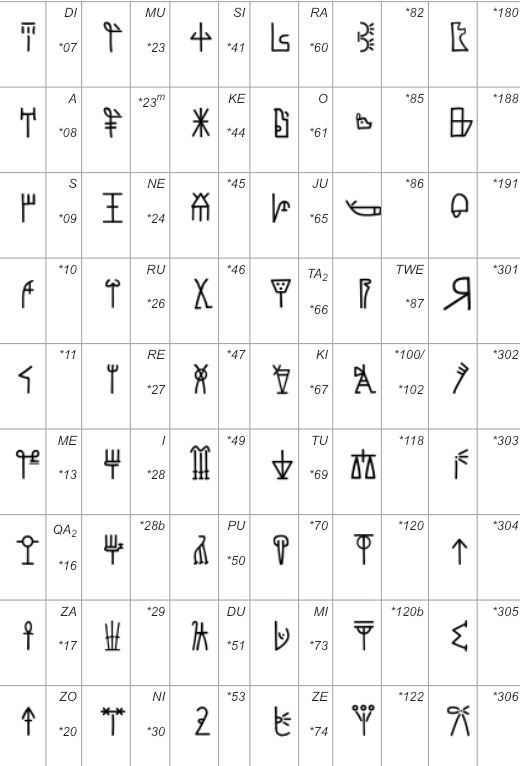
(Source)
The Syllabary was mainly written from left to right, like English, but it was also written in a type of boustrophedon style, left to right on one line and mirrored on the next like some Ancient Greek texts. Here is a Wikipedia example of how they work.

#Linear A#Linear A script#Minoan#Minoan language#Minoan civilization#I put this together in like 10 min#I like it but I could have done better
29 notes
·
View notes
Text
Cretan Hieroglyphs
The Cretan Hieroglyphs are an undeciphered script from Bronze Age Crete. It is believed that they were used for the Keftiu (”Minoan”) language. However, due to lack of understanding, this can not be proven, yet that is. It was first attested in 2100 BCE, but the language could have been spoken long before. The hieroglyphs later developed into the Linear A script, but hieroglyphs were used alongside Linear A for a number of years. It is believed that the hieroglyphs, like in Linear B, are a mixture of logograms and syllables. As with all undeciphered scripts, we have no way to be certain of anything. Here are some characters that look similar to that of Linear B, so it can be assumed that they might make the same sound!

(Source)
Here is a comparison of some Cretan Hieroglyphs, Linear A, Linear B, and their possible transliteration!



#crete#cretan#Cretan hieroglyphs#Minoan#Minoan language#I'm not really happy with this post so I might remake it another day
10 notes
·
View notes
Text
WIP
I’m working on a post on Cretan Hieroglyphs rn, but I feel like I might need to make a post on Linear A first? We’ll see after I work on this post more! Also can we stop referring to the people who wrote in Linear A as Minoan?!? It was referred to as Keftiu in Egypt, Kaptara in Syria, or even 𐀐𐀪𐀯𐀍 Krisios or Cretan. Like Idk I just feel like those all fit better than Minoan, you know!
2 notes
·
View notes
Text
Mycenaean Greek 𐀘𐀐𐀙𐀂𐀐 𐀁𐀩𐀛𐀐 Μυκηναϊκή Ελληνική
Mycenaean Greek is the earliest recorded stage of the Greek language. It was spoken from the periods of the Intermediate Bronze Age to the Greek Dark Ages, the 16th century BC to the 12th century BC. It was written with Linear B syllabary, that was derived from the Minoan Linear A script. While Minoan is still largely undeciphered, Mycenaean has been. Mycenaean was largely deciphered thanks to Arthur Evans, Michael Ventris, and John Chadwick. There has been a pebble discovered that was reportedly dated to the 17th century BC. However, it is largely believed that it was an April fools joke.

(Source)
Script:
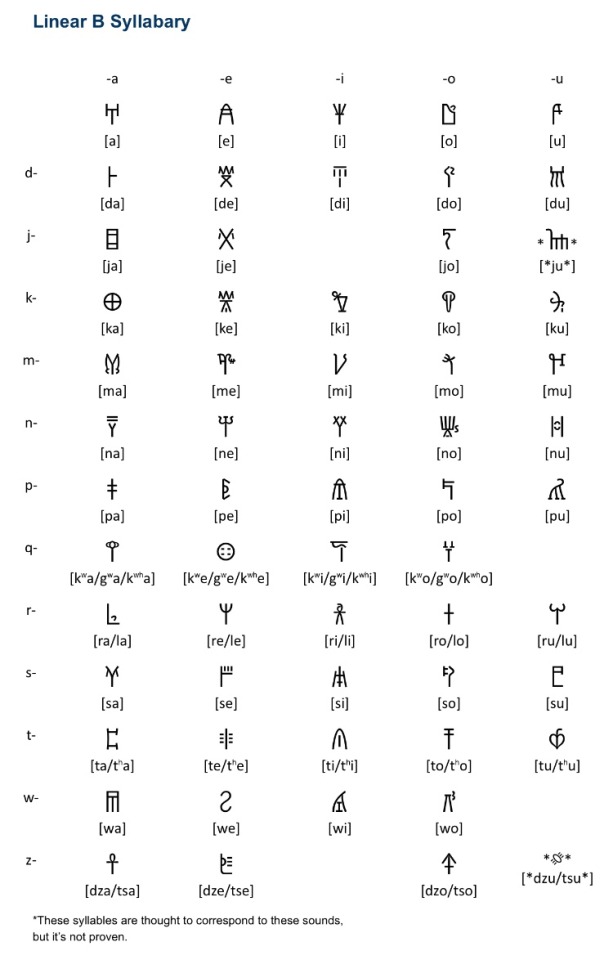

Linear B is a syllabary, but it also has a lot of logographic symbols (more on that below). The final consonants (l, m, n, r ,and s) are not written, the initials s and w aren’t as well. The initial breathy h sound is similarly not written. Consonant clusters are written separately, ex. 𐀏(ka)+𐀭(sa)=ksa. Voicing and aspiration aren’t distinguished, so 𐀏 could be pronounced ga, ka, or kʰa. The q’s are pronounced as kʷ or gʷ, z is possibly pronounced as dz, and r is used to write the r sound and the l sound.
Unlike the syllables, the Mycenaean logograms didn’t have a specific phonemic sound. They usually come at the end of a word, or they come before a number (more on numbers later). The logograms depicting animals tend to have gendered markers.
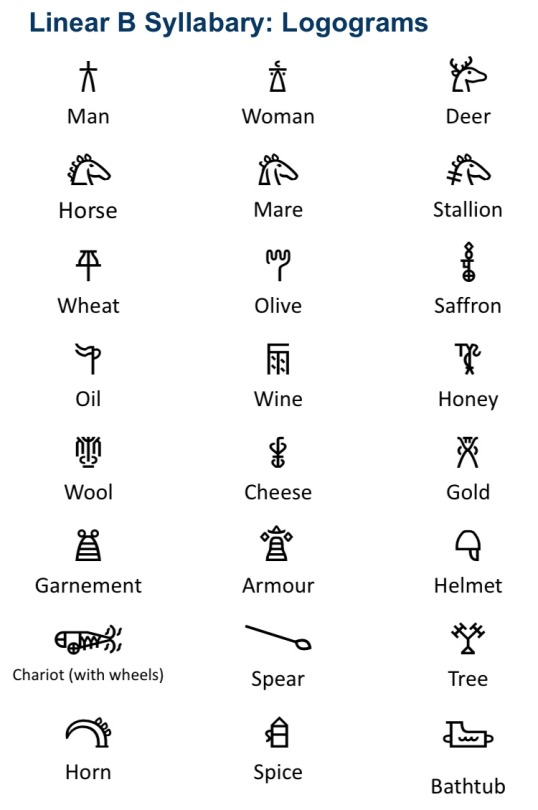
Numerals:

The Mycenaeans used the Aegean numerals to count. This system was inherited from the Minoan civilization (like the script itself). Aegean numerals were used to write numbers in Linear A, B, and C (Minoan, Mycenaean, and Cypriot Syllabaries).
In order to get more complex numbers, you would have to add them together. For example, 𐄣(2.000)+𐄐(10)+𐄏(9)= 𐄣𐄐𐄏(2019), 𐄳𐄩𐄟𐄕𐄋 would be 98,765, etc.
Morphology:
Mycenaean used 7 cases (nominative, accusative, genitive, dative, vocative, instrumental, and locative), but the instrumental and locative disappeared in later Greek dialects.

(Source)
It had 3 genders (masculine, feminine, and neuter), numbers (singular, dual, and plural), tenses (past, present, and future), aspects (perfect, perfective, and imperfective), voices (active, middle, and passive), and persons (first, second, and third). Mycenaean used the infinitive. It also had 4 moods (indicative, imperative, optative, and subjunctive).
Examples:
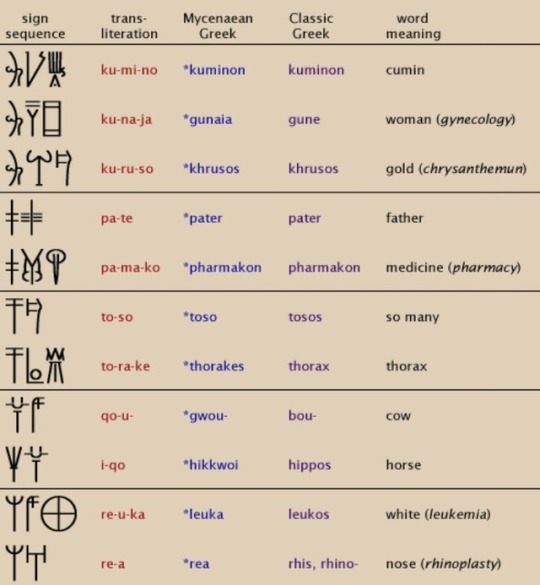

(Source)

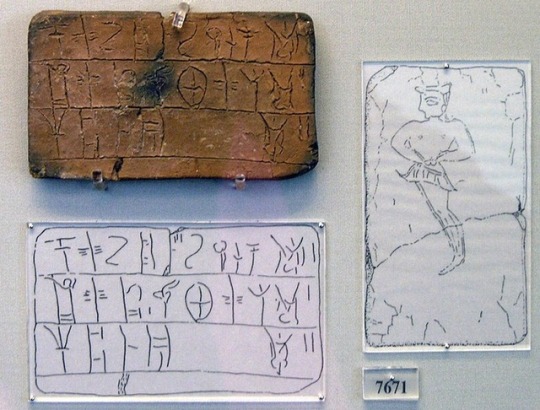
(Source)
YouTube:
I Love Languages: The Sounds of the Mycenaean Greek Language
Michael Ventris talking about Linear B
Helena Tomas on Linear A and B
The decipherment of Linear B part 1
Part 2
History of Greek
Linear B Wikipedia article
Mycenaean Greek Wikipedia article
Writing Linear B vowels
Textbooks and Resources:
Decipherment of Linear B- Chadwick
Linear B and Related Scripts - Chadwick
Documents in Mycenaean Greek - Ventris and Chadwick
Linear B: an Introduction - Hooker
Mycenaean Greek dictionary
Greek gods in Mycenaean Greek
My Memrise course on Linear B
42 notes
·
View notes
Text
The Linear B Syllabary
I’ll start with the writing system that I have swiftly fallen into a deep love and passion for! The Mycenaean syllabary was first attested in the 16th century BCE. It was used by the Mycenaeans up until the Bronze Age collapse in the 12th century BCE. There was a theory of it being written in the 17th century BCE, but it is largely believed that that was a hoax!

The syllabary includes both syllabic characters and logographic characters. The syllabary itself was based on the earlier Minoan Linear A syllabary, but Linear A has yet to be deciphered. Here are some charts I made showing the syllabary in the style of Omniglot’s charts (Basically I tried to copy it).

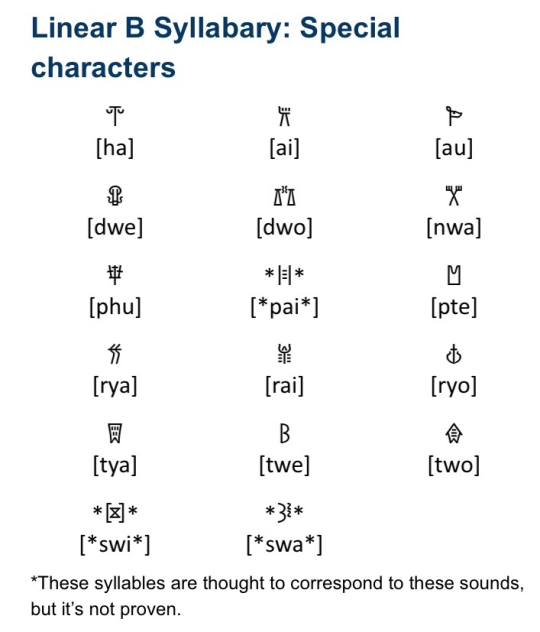

The logograms, as their name implies, corresponded to words instead of specific sounds, think like kanji characters in Japanese. For example, the word for man could be written as 𐀀𐀵𐀫𐀦 or by the logogram 𐂀, but they both were still pronounced as anthropos.
The syllabary represented open syllables, CV, but some would represent a closed syllable. The consonants of l, m, n, r, and s would not be written if they came at the end of a syllable. For example, my name is Aleksandros (𐀀𐀩𐀏𐀭𐀈𐀫). In Linear B this is broken down into A-re-ka-sa-do-ro, but the n and final s were not written since they came at the end of the syllable. As you can also see, ka+sa made the sound of ksa, and the r series of letters corresponds to both r and l. The same rule of not writing certain sounds applies to the beginning of words as well. However, it’s just s and w. For example, the word for seed is 𐀟𐀔, pronounced sperma, but it is written as pe-me. Also notice the missing r in the initial syllable!
The Mycenaeans also used the Aegean numeral system, which they had adopted from the Minoans and the surrounding Aegean cultures they came into contact with!

In order to get compound numbers, they would be written by each other and basically added together. For example, to write 2019, 𐄣𐄐𐄏, you would take 2.000+10+9!
I’m going to repost my overview of the Mycenaean Greek language, because I know I probably did a better job on that post! I’ll try and be back soon with a new writing system! I’ll probably go to Linear A or C next! I’m going to try limiting myself to just doing the Bronze Age script for now!
#linear b#mycenaean greek#mycenaeans#mycenaean#writing#writing systems#greek#greek language#ancient greek#ancient greek language#studyblr#langblr
540 notes
·
View notes
Text
Introduction
So I made this account to make posts about different writing systems! They’re honestly my favourite parts of a language, and with this, I hope to spread my love onto you! I’m going to try very hard to be as accurate as possible with how I present these, and I’m going to try to reach out to native users to make sure I’m as accurate as I can be! I have no clue what community this belongs into. Anyway, I have 2 other blogs @greekflowerboy for my general reblogs and posts and @helleniclanguageboy for posts about the Hellenic languages and other languages I’m interested in
8 notes
·
View notes

